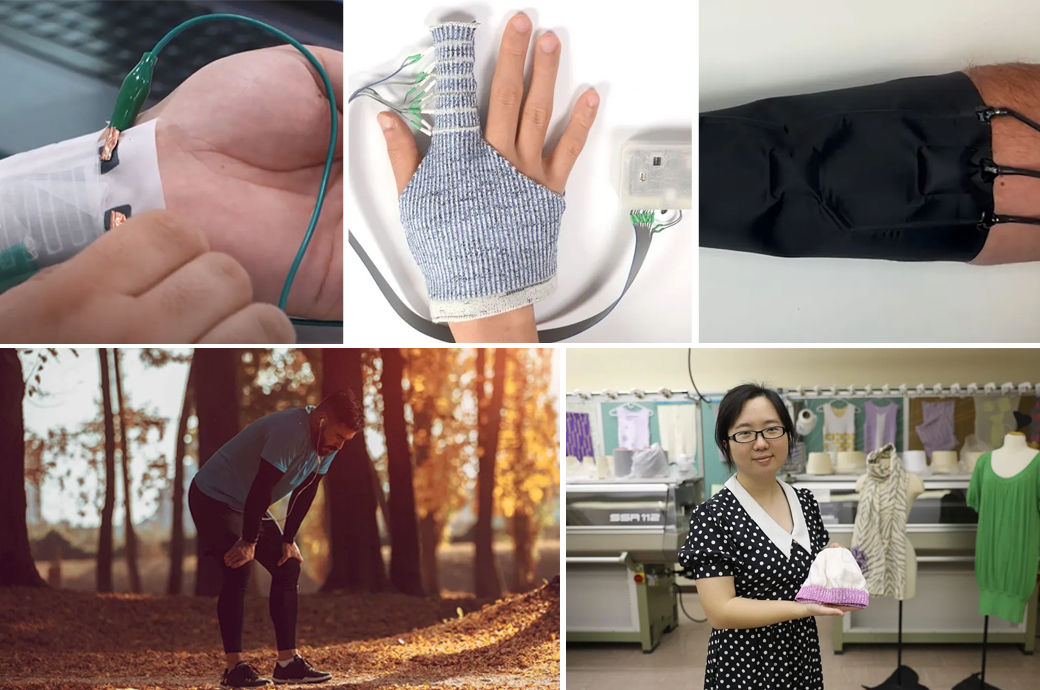
US researchers build knitted robotic textile for hand oedema patients: US-based Cornell University researchers developed a wearable technology called KnitDema that can help massage swollen areas of a patient with hand oedema. Hand oedema is a condition that causes the accumulation of excess fluid in the hand due to injury or disease, and the best current treatment for it is manual oedema massage (MEM) by a trained therapist. However, access to care and cost can make the procedure prohibitive for some patients. KnitDema offers a potential solution that is personalised and can be used in the comfort of a patient’s own home.
ETH Zurich researchers develop textile sensor to detect exhaustion: A team of researchers at ETH Zurich, led by Professor Carlo Menon, developed a new smart textile sensor that can measure how exhausted a person becomes during physical activity. This innovation could potentially prevent injuries caused by exhaustion during exercise or physical tasks. The researchers integrated the sensor into a pair of athletic leggings, allowing wearers to see in real-time when they are approaching their limit and when they should take a break. The sensor is made of a special type of yarn that measures the effect of exhaustion on a person’s body movements, such as shortening strides and irregular movement patterns.
UWE Bristol researchers introduce fabric that monitors heart rate: University of the West of England (UWE) Bristol researchers at the Centre for Print Research (CFPR) successfully developed a prototype of a simple piece of fabric, which when placed around a wrist can monitor heart rate and can be worn and washed at least 10 times without compromising its monitoring ability. The goal of the research team, led by senior research fellow Dr. Shaila Afroj, is to develop wearable garments, such as a T-shirt, that are unobtrusive to the patient and can be used in hospitals or at home to enable health data to be monitored remotely and continuously.
US researcher designs ‘smart’ hat that tracks babies’ body temperature: Smart clothing made of thermochromic yarn that changes colour based on body temperature will soon be able to detect fever in newborns. Louisiana State University’s (LSU) researcher Sibei Xia has designed hats that have a band that combines functional and cotton yarn to detect temperature without influencing its comfort. The body-tracking wearable technology—a hat—could reduce the need for monitoring an infant’s temperature using thermometers and other invasive technologies.
South Korean researchers develop graphene-based sensory e-textiles: A joint South Korean research team developed multimodal electronic textiles (e-textiles) based on graphene. The produced e-textiles exchange information through various sensory interfaces like visual and auditory sensations. The researchers, from the Korea Institute of Machinery and Materials (KIMM) and the Korea Advanced Institute of Science and Engineering (KAIST), used laser direct patterning technology to form laser-induced graphene (LIG) on e-textiles, successfully manufacturing graphene-based materials with world-class electrical conductivity, according to their findings published in the scientific journal ACS Nano. The breakthrough opens up new avenues for the creation of industrial and military clothing tailored for personal health management, as well as customised ‘smart’ clothes in the healthcare sector.
US engineers develop wearable, textile-based device: A wearable, textile-based device was developed by Rice University engineers that could help declutter, enhance — and, in the case of impairments — compensate for deficiencies in visual and auditory inputs by tapping this underused sensory resource. The system of haptic accessories built by the Rice labs of Daniel Preston and Marcia O’Malley reduces the need for hardware by programming haptic cues into the textile structure of the wearables using fluidic control. An application example is restoring the sense of touch for an amputee by embedding sensors on a prosthesis to gather data that the wearables could relay as haptic feedback elsewhere on the body.
Fibre2Fashion News Desk (RKS)

